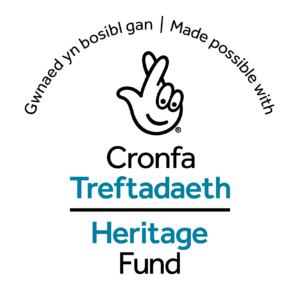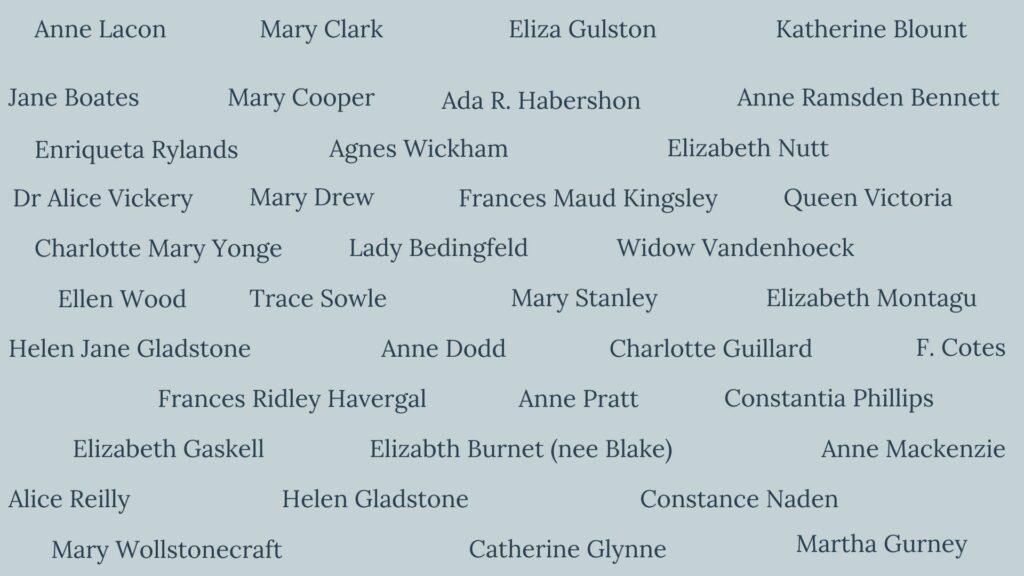By Alice Cleave- Engagement and Learning Officer
Over the last month we have run several sessions relating to the Women of Library. This blog will give you an insight into the development of one of our engagement and learning sessions, from the initial concept to the final product.
The Idea
The majority of our sessions focus on W. E. Gladstone and his liberal values and legacies, but with Women of the Library we wanted to highlight the role that women played in the development of the institution , as well as shining a light on the women’s histories contained within our collections. During my time at the Library I have been collecting snippets of conversations that I have been having with members of the Reading Rooms team about different women and their links to the collections. Slowly but surely a vision was forming of what I thought the session should be about, a key component being that I wanted to produce a timeline of the Library told through the lens of women. I wanted to highlight the women in the collections, especially from history, as well as including the women who work at the Library now.
The Research
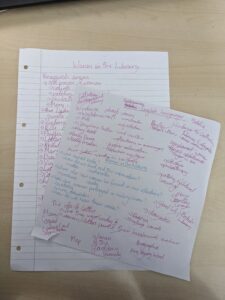
My approach to research hasn’t changed much since writing essays at university, I like to start big and look at all the different avenues that the project could take before narrowing them down further. After meeting with our Librarian and Archivist I had a chaotic set of notes (due to the way I work rather than them) and over fifteen different directions I could go. After this I took some time to think about the key themes that I wanted to cover in the session. Eventually, I decided that the main themes were, how do you find women histories, the role that women play in society at different points and the role of a name. They may seem very abstract and broad, but they really helped to focus the content of the session. With this narrowed focused it was easy to go forward with the research and collect information about the various women in our collections. I was mainly building on the information collected by our Librarian and Reading Rooms team previously.
The Resources
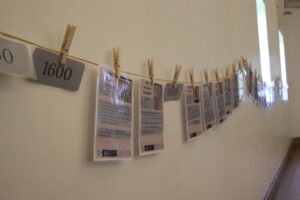
The next step was to translate the research into some practical resources which could be used in the session and adapted to meet the needs of different groups. The biggest element of work was gathering the information for the timeline because, as discussed during our session, women’s histories are not always very easy to find. We were able to build on work previously undertaken at the Library for Women’s History Month, which made it a much less daunting task. Once the research was completed and the format of the timeline decided, it was just a case of inputting the information.
The most difficult part was deciding which collection items to use as part of the session. During the research period there were many different sources that came to light which were fascinating but not everything is suitable for a session, there are some criteria that they need to meet. It is important that the collection items we use are accessible to the different age groups that we work with while still challenging them to consider new ideas. We had decided to digitise some collections items to build in more flexibility to the session. It is important to consider the physicality of an item being digitised not just its content, as pamphlets digitise well, but tea towels not so much. We digitised and made facsimiles of several women’s suffrage pamphlets written by women both in favour of women’s suffrage and against it. We also digitised several letters sent to Gladstone by women, as well as the correspondence between Catherine Gladstone and Queen Victoria.
When designing the session, it was important to highlight the wealth of resources relating to women’s history that we have at the Library. However, that did mean that when our Librarian and I came to select the books we emerged from the rare bookstore with around twenty volumes, rather than the 5 I had been aiming for. Even though it made finding space to display them all a bit challenging, I do not regret the decision after seeing a group of Rangers enthusiastically asking questions and engaging with them.
The Sessions
The structure of our Women of the Library session changes depending on its audience, when we had the group of Rangers (aged 14-18) in, we utilised the assistance of our Librarian and her knowledge of researching women’s history. We had a very collections-based session and took advantage of the History Room being closed to display the items. We had scheduled a creative activity to end, but the Rangers were very engaged in the items they were viewing that we simply ran out of time.
When we had Brownie and Guide (aged 7-14) units in for an International Women’s Day event, they had the opportunity to engage with the timeline through a worksheet and then consider what they might want to do as a job in the future. The timeline allowed them to engage with the collections in an accessible way. As the session was in the evening, we also utilised the History Room for them to look and feel historic books (under the supervision of our Librarian) and then make their own book.
The session was again adapted to suit a more academic audience in the form of English Literature students from the University of Chester. We shifted the focus of the session slightly to have more of a focus on literature written by women, while still introducing them to ideas around the study of women’s history. They engaged both with the timeline and a range of items form our collections. It was interesting to listen to how they were finding links to their own research and learning and the information they were drawn to.
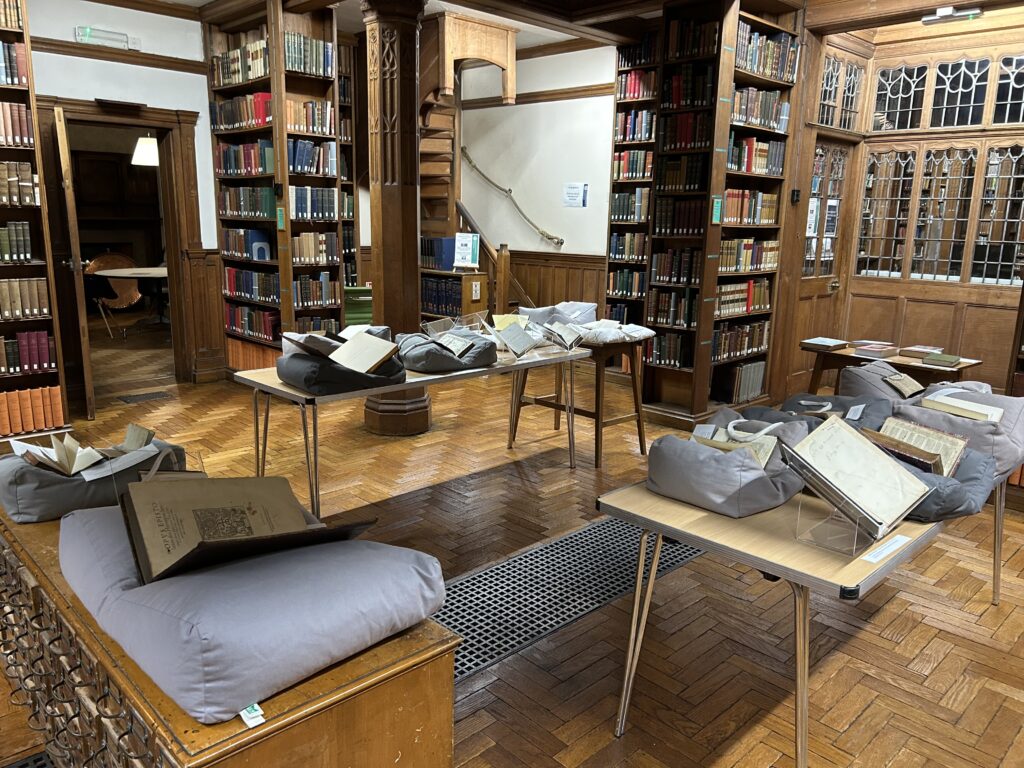
The Evaluation
We always ask for evaluation at the end of our sessions because it is useful to know what works well and what could be changed. It’s also a useful way to gage the key information that an individual is taking away from a session. Some examples of what was taken away from our Women of the Library session include
- “I learned about female book ownership and printing in history and was interested to find out about how they can be traced”
- “About how women gifted and owned books “
- “Women’s impact in history and their role in literature”
- “ I loved learning about the women of the Library”
All of which is great news when we think back to what our initial aims of our session were.
I hope this has provided an insight to some of the work of the Engagement and Learning team here at Gladstone’s Library.
Please do get in touch if you would like to discuss how we could work with your group, school, college or university.
The Engagement and Learning Officer roles are supported by funding from the National Lottery Heritage Fund.
